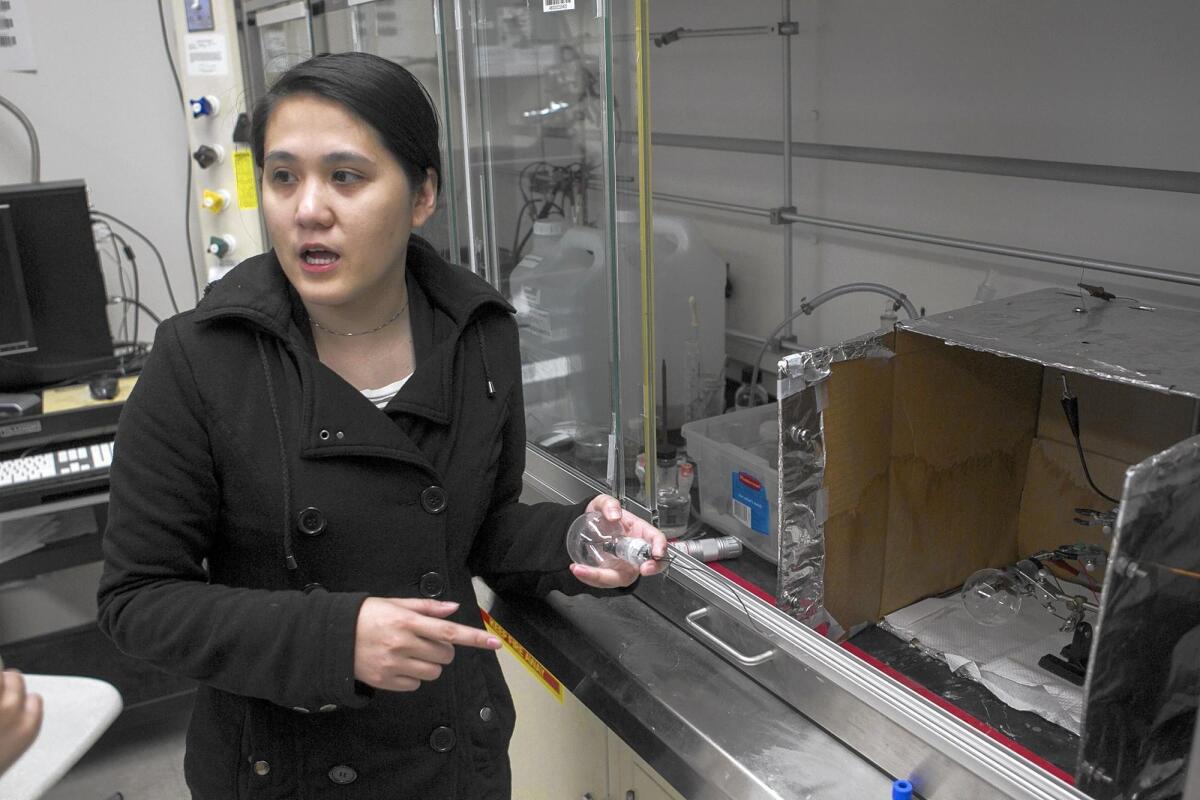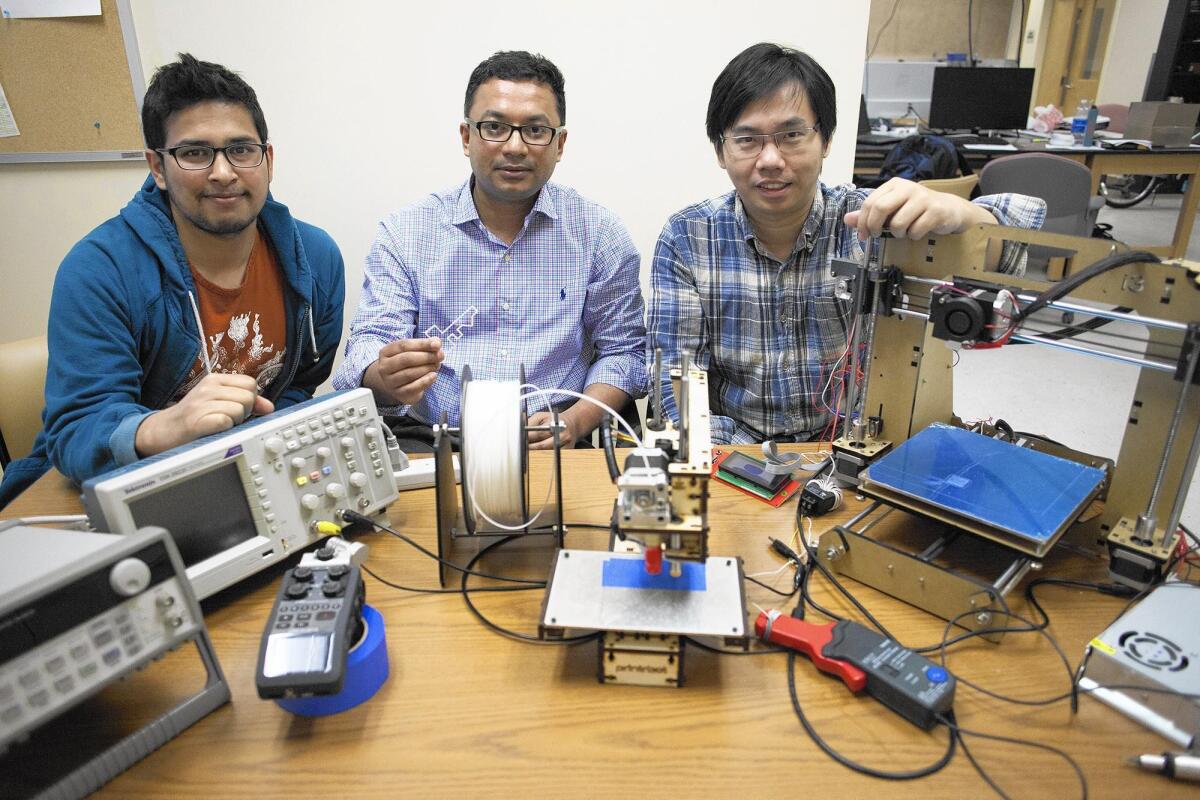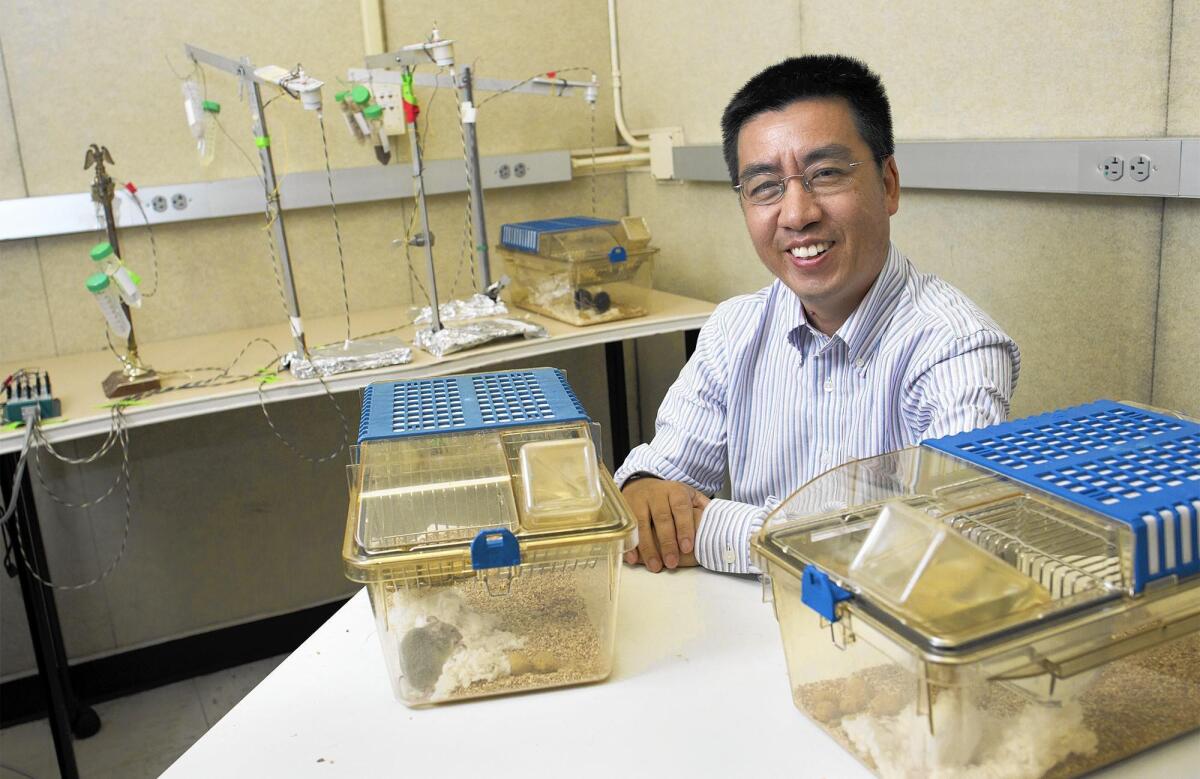2016 in review: UC Irvine researchers have an influential year
- Share via
From indoor labs to outdoor power plants, headline-grabbing scientific research could be found in every nook and cranny at UC Irvine in 2016.
Research teams across the university have made headway this year on ventures ranging from renewable fuel to longer-lasting batteries to treatments for sleep disorders to ways to protect sensitive information.
One team, in work piloted at UCI during the summer, demonstrated the country’s first power-to-gas hydrogen pipeline injection project, a system that converts excess energy from solar panels into hydrogen that can be mixed with other natural gas and burned in the campus’ power plant to produce electricity and heat for the school.
Join the conversation on Facebook >>
Power-to-gas techniques are already used in Canada and Germany, according to Jack Brouwer, associate director of the Advanced Power & Energy Program at UCI.
With funding from Southern California Gas Co. and manufacturing from Connecticut-based Proton OnSite, UCI engineers installed an outdoor electrolyzer on the university’s power plant site for their energy research.
The electrolyzer uses excess clean electricity to power a reaction that divides water into oxygen, which is released into the atmosphere, and hydrogen, which travels through a stainless-steel tube that leads to the school’s natural gas pipeline.
Researchers are studying the project to see whether a power-to-gas system can be implemented on regional or statewide gas and electric grids.
“With the use of more solar and wind power, we have to find some way of using the excess electricity,” Brouwer said.
UCI researchers this year also have looked into lengthening battery life.
Chemistry doctoral candidate Mya Le Thai led a project that developed a capacitor, a device that stores an electric charge, that can be recharged hundreds of thousands of times without losing capacity.

Mya Le Thai, a chemistry doctoral candidate at UC Irvine, talks in May about research she led that developed a capacitor, a device that stores an electric charge, that can be recharged hundreds of thousands of times without losing capacity. She hopes the capacitor can lead to longer-lasting batteries.
Thai said in May that she hopes the capacitor can lead to the creation of longer-lasting batteries for phones and possibly satellites.
The capacitor – which is about 2 inches long and about a quarter-millimeter thick – is made of a gold nanowire, a Plexiglas-like gel and an inorganic compound known as manganese dioxide.
Unlike in a typical battery, the capacitor’s nanowire is coated with the manganese dioxide and gel, protecting it from flaking and losing material as the current goes through it.
After Thai charged and discharged the capacitor through 200,000 test cycles in a lab over three months, she found no cracks in the nanowire, and the capacity had not degraded at all.
“Today, people charge many devices for work or at home, so either we come up with a new battery or a new way to recycle them,” Thai said.
Other UCI researchers presented projects and findings internationally this year.
Mohammad Al Faruque, director of UCI’s Advanced Integrated Cyber-Physical Systems Lab, and a student on his team traveled to a cyber conference in Vienna, Austria, in April to share their work on how a 3-D printer’s noise emissions can reveal sensitive information.

Mohammad Al Faruque, center, director of UC Irvine’s Advanced Integrated Cyber-Physical Systems Lab, poses in March with graduate students Sujit Rokka Chhetri, left, and Jiang Wan as they discuss their research of how a 3-D printer’s noise emissions can reveal sensitive information.
In their lab, the researchers recorded the sounds made by one of their 3-D printers as it shifted back and forth to print a key out of polymer plastic.
Afterward, they used an information processing algorithm to take the sounds and produce the code needed to print nearly an exact replica of the key.
The group found that audio recordings have the potential to leak valuable information used to print parts for cars and planes, Faruque said in March.
The team said it planned to search for ways that such information can be protected.
A team led by UCI professor of pharmacology Qun-Yong Zhou searched for answers to questions about the sleeping and waking patterns of animals and how the research may lead to treatments for humans with sleep disorders.
The group determined that the patterns are not governed by a portion of the brain commonly thought to be the body’s “master clock.”

UC Irvine pharmacology professor Qun-Yong Zhou is pictured in August with mice used in a study of why some animals sleep at night and others sleep during the day.
Instead, the researchers found that light traveling through the animals’ eyes sends different signals to their brains, telling nocturnal animals to sleep when there is light and diurnal animals — which are active during the day — to wake when there is light.
The more scientists understand the “wiring” in the animals’ brains, the more they can learn about the nature of the same signals traveling within the human brain.
Zhou said the team is using its research to find potential sleep treatments for humans and to determine whether it’s possible to redirect the signaling patterns in the brain.
“Can you make an animal less nocturnal or can you convert the animal to sleep at night? These are some of the questions we have,” Zhou said in August. “We are scientists. When we find that one thing doesn’t explain, then maybe there’s another thing that will.”
--
Alex Chan, [email protected]
Twitter: @AlexandraChan10
